Every sport has great rivalries. In fact, they form the beating heart of sports: Without an enemy, how can you have heroes?
The months of March and April see a string of the biggest rivalries in club soccer across the best leagues in Europe and North America, with every weekend packed full of grudge matches. And with these contests, there's no sitting on the fence: you must pick a side.
Here's your one-stop guide to these upcoming clashes in which pride is often the biggest and best trophy at stake.
Jump to a rivalry:
Tottenham vs. Arsenal | Lazio vs. AS Roma
Real Madrid vs. Barcelona | Benfica vs. Porto | Everton vs. Liverpool
Monterrey vs. Tigres | Chivas vs. Club America
Panathinaikos vs. Olympiakos | AC Milan vs. Inter
PSG vs. Marseille | Vancouver vs. Seattle
Celtic vs. Rangers | Bayern Munich vs. Borussia Dortmund
Fenerbahce vs. Galatasaray | Man United vs. Man City
Borussia Dortmund vs. Schalke 04


Tottenham vs. Arsenal
March 2, 7:30 a.m. ET
Name of rivalry: North London Derby
Year the rivalry began: 1896
Overall head-to-head record (wins-draws-losses): Played 197, Arsenal lead 82 wins, 51 draws, 64 losses
Tottenham's biggest villain: Sol Campbell was a homegrown hero at Tottenham, a local boy who became captain, but when he left for Arsenal "to win trophies" in 2001, he crossed the divide and became a hate figure at Spurs.
Arsenal's biggest villain: Spurs fans call Harry Kane "one of our own," but Arsenal fans haven't forgiven the striker for playing for the enemy after being pictured wearing a Gunners kit as a youngster.
Story that best explains the rivalry: Arsenal were once Woolwich Arsenal, based south of the River Thames, but they invaded Tottenham's North London turf in 1913 to ignite the rivalry.
Why you should watch this edition: It might not stop the clocks across the country, but it's the biggest game in London every season. -- Mark Ogden

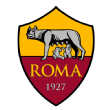
Lazio vs. Roma
March 2, 2:30 p.m. ET, ESPN+
Name of rivalry: Derby della Capitale
Year the rivalry began: 1929
Overall head-to-head record (wins-draws-losses): Played 171, Roma lead 65 wins, 61 draws, 45 losses
Lazio's biggest villain: Who else but the King of Rome himself, Francesco Totti? The top scorer in this rivalry scored a trademark lob in a humiliating 5-1 win against Lazio and used to prepare t-shirts with provocative slogans like "I've purged you again" and "Game over" to mock them in celebration.
Roma's biggest villain: This is a toss-up between Giorgio Chinaglia and Paolo Di Canio. The pair of them are Lazio heroes not only for scoring goals against Roma but celebrating them provocatively under the Curva Sud where the rival fans stand. The photo of Chinaglia doing so in March 1974 is one of the most iconic in Italian football.
Story that best explains the rivalry: In 2006, Lazio coach Delio Rossi promised to dive into the Gianicolo fountain in the event that his team won the derby. Rossi kept his word even though Roma fans had spent the week doing everything to ensure the water had a high urine concentration.
Why you should watch this edition: The pair of them want to qualify for the Champions League at the other's expense. This one could be Daniele De Rossi's last. It's a chance to see Nicolo Zaniolo, the kid the Roma media is proclaiming the "new Totti," and Sergej Milinkovic Savic, who was the best young player in the league last season. Zaniolo has taken his mantle. -- James Horncastle

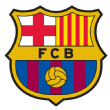
Real Madrid vs. Barcelona
March 2, 2:45 p.m. ET
Name of rivalry: El Clasico
Year the rivalry began: 1902
Overall head-to-head record (wins-draws-losses): Played 240, Real lead 95 wins, 51 draws, 94 losses
Real Madrid's biggest villain: Since joining Barca in 2014, Luis Suarez has especially annoyed Madrid with his mixture of physical combativeness and wily gamesmanship whenever they meet. The Uruguay centre-forward's hat-trick in Barca's 5-1 victory in last October's La Liga Clasico at the Camp Nou also hurt everyone at the Bernabeu.
Barcelona's biggest villain: Sergio Ramos' five red cards in the fixture is a Clasico record, with the Blancos captain symbolising the aggressive approach his side have often taken to stop Barca talisman Lionel Messi having his usual impact on games.
Story that best explains the rivalry: The pig's head thrown from the Camp Nou stands at then Real Madrid winger Luis Figo in November 2002 remains a colourful symbol of just how upset Barca were when the Portuguese crossed the Clasico divide two years earlier. Unsurprisingly, no player has made the move, in either direction, since then.
Why you should watch this edition: Barca's easy win in October showed their clear superiority at the time, but Madrid have improved a lot since. Whoever comes out in top at the Bernabeu will go a long way to deciding which side has the better 2018-19 campaign. -- Dermot Corrigan

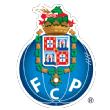
Benfica vs. Porto
March 2, 3:30 p.m. ET
Name of rivalry: O Classico
Year the rivalry began: 1912
Overall head-to-head record (wins-draws-losses): Played 234, Porto leads 91 wins, 58 draws, 85 losses
Benfica's biggest villain: Jorge Nino Pinto da Costa is the longest-serving club president in world football. He took the reins in April 1982, having first started working for Porto in the late 1950s, and made it his business to wrest the initiative from Portugal's capital -- and Benfica's home city -- Lisbon. He once said that a trophy won by Porto is worth at least twice as much as won one by a Lisbon-based side. Pinto da Costa is a charismatic, often highly controversial figure and is regarded as the architect of Porto's modern success.
Porto's biggest villain: With 17 goals, nobody in this fixture has been as prolific as the Benfica legend Jose Aguas, who had a remarkable record for the club in the 1950s and 1960s. He won five league titles and seven domestic cups for the club, and Porto's defenders could barely get near him.
Story that best explains the rivalry: Aguas's son, Rui, had been a free-scoring striker for Benfica in his father's mould when he became one of the few who have crossed the divide in 1988. He spent two years at Porto and, even though he then returned to Benfica and picked up where he left off, claims many of the Lisbon club's fans have never forgiven him for leaving in the first place.
Why you should watch this edition: Because the pair are neck and neck at the top of the Primeira Liga, with Benfica desperate to wrench back the title that Porto took from them last season. It should be spicy. -- Nick Ames

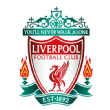
Everton vs. Liverpool
March 3, 11:15 a.m. ET
Name of rivalry: The Merseyside Derby
Year the rivalry began: 1894
Overall head-to-head record (wins-draws-losses): Played 232, Liverpool lead 93 wins, 73 draws, 66 losses
Everton's biggest villain: Robbie Fowler was a blue-blooded Evertonian as a youngster, but he signed for Liverpool and tormented his boyhood club, earning endless abuse as a result.
Liverpool's biggest villain: Former Everton manager David Moyes angered Liverpool fans by claiming his team were the "People's Club," a suggestion that still irks Liverpudlians almost 20 years on.
Story that best explains the rivalry: This one is deep-rooted, but Anfield was originally Everton's home ground. Liverpool moved in in 1892 and grew to become the city's dominant team.
Why you should watch this edition: Everton are desperate to derail Liverpool's title bid and beat their neighbours for the first time since 2010. -- Mark Ogden

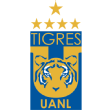
Monterrey vs. Tigres
March 9, 8 p.m. ET
Name of rivalry: Clasico Regiomontano or Clasico Regio
Year the rivalry began: 1960
Overall head-to-head record (wins-draws-losses): Played 117, Tigres lead 43 wins, 33 draws and 40 losses, with one suspended game
Monterrey's biggest villain: French striker Andre-Pierre Gignac scored four times against Rayados in the famous 6-1 thrashing over two legs of the 2017 Clausura quarterfinal, but it's more what he has represented in terms of swinging the pendulum of the rivalry in Tigres' favor. Gignac moved from Marseille in summer 2015 and has propelled Tigres to three Liga MX titles since in a period of dominance that will go down in history. Most importantly, those championships lifted Tigres onto six titles, two more than Monterrey.
Tigres' biggest villain: Don't mention Mario de Souza Mota to fans of a certain age. No player in the history of the clasico has more goals (11) than the Brazilian, who played for Monterrey between 1984 and 1992. "Bahia," as he's more commonly known, not only scored goals against Tigres, but netted some of the greatest golazos the Clasico Regio has ever seen, completing them with his famous "plane" celebration.
Story that best explains the rivalry: The 2017 Apertura Clasico Regio final was won by Tigres in epic circumstances, but it also served to highlight that Mexico's two richest clubs and deepest squads are still not considered part of Liga MX's elite "big four" by the Mexico City-dominated press core.
Why you should watch this edition: Liga MX's best two teams will be on show, and it'll be the first game between the sides since Tigres famously lifted the 2017 Apertura trophy in Monterrey's Estadio BBVA Bancomer. Also, both are fighting for top spot in the table. -- Tom Marshall

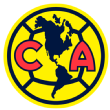
Chivas vs. Club America
March 16, 9 p.m. ET
Name of rivalry: Super Clasico, Clasico de Clasicos, Clasico Nacional
Year the rivalry began: 1943
Overall head-to-head record (wins-draws-losses): Played 231, Club America lead 82 wins, 75 draws, 74 losses
Chivas' biggest villain: Cuauhtemoc Blanco's upbringing in the infamous Tepito neighborhood in Mexico City forged skills that could only be honed on the streets and a character that seemed to represent the very spirit of Club America. "Cuau" never missed an opportunity to take a shot at Chivas, saying he hoped the club went down when it was flirting with relegation in 2015.
Club America's biggest villain: Salvador "Chava" Reyes: The Chivas striker is comfortably the leading scorer in Clasico Nacional matches with 13 goals, and Reyes was an integral part of the celebrated "Campeonismo" era of Chivas' history, when the club won seven titles in less than nine years and dominated Club America from 1956 to 1965. Reyes played an important role in establishing the parameters of the rivalry and Chivas as a giant club.
Story that best explains the rivalry: The story (whether it is 100 percent true or not) goes that when media magnate Emilio Azcarraga bought Mexico City's Club America in 1959, during Chivas' "campeonisimo" period, he stated that Las Aguilas would knock them off their perch by becoming the "bad guys" and buying the best foreign talent. The seeds of the rivalry between the showy capital city team with its foreign stars and the provincial Guadalajara team with a Mexican-only policy were sown.
Why you should watch this edition: Chivas appear revitalized this season, while America looks to have something of a championship hangover. Both are in the playoff race, which isn't always the case. -- Tom Marshall

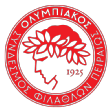
Panathinaikos vs. Olympiakos
March 17, 1 p.m. ET
Name of rivalry: Derby of the Eternal Enemies, or The Mother of all Battles
Year the rivalry began: 1927
Overall head-to-head record (wins-draws-losses): Played 198, Olympiakos leads 80 wins, 68 draws, 50 losses
Panathanaikos' biggest villain: Journeyman ex-Blackburn striker Matt Derbyshire may make an unlikely villain of the piece, but he became known as the "English killer" after scoring a late winner, away from home, against the latter in 2010. He had dealt such a crushing blow that Panathinaikos fans attempted to set Olympiakos' team bus on fire afterward.
Olympiakos' biggest villain: Dimitris Saravakos scored 16 goals in this fixture, more than anyone else has managed, during the 1980s and 1990s with Panathinaikos. Without him, they may not have beaten their bitterest rivals to three league titles.
Story that best explains the rivalry: The tone was set in 1930 when Olympiakos fans brought green coffins -- their rivals' colour -- to a derby in anticipation of a win and a mock funeral, but lost 8-2 and saw the Panathinaikos supporters dismantle their creation.
Why you should watch this edition: Olympiakos have lost two and drawn two of their last four meetings and desperately want to return to winning ways. It will also improve a frustrating season for whoever does win, with Olympiakos adrift of runaway leaders PAOK while Panathinaikos are miles off the pace. -- Nick Ames
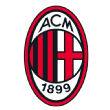
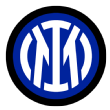
AC Milan vs. Inter Milan
March 17, 3:30 p.m. ET, ESPN+
Name of rivalry: Derby della Madonnina
Year the rivalry began: 1909
Overall head-to-head record (wins-draws-losses): Played 222, Inter leads 79 wins, 67 draws, 76 losses
Milan's biggest villain: Peppino Prisco was Inter's legal counsel for years and bled blue and black. Before dying he joked he would become a Milan fan so that there'd soon be one less on earth. He used to say that a true Inter fan is only 20 percent a supporter of his own team and 80 percent anti-Milan.
Inter's biggest villain: The word "Sheva" is almost onomatopoeic in that it captures perfectly the shivers it sends down Inter spines. Milan legend Andriy Shevchenko is the all-time top scorer in this rivalry, and his fingerprints can be found all over some of the most painful moments in recent memory for Interisti from the 6-0 defeat in 2001 to the away goal that knocked them out of the semifinals of the Champions League in 2003, which Milan would of course go on to win.
Story that best explains the rivalry: Shortly after Inter won the league in 2007, Milan beat Liverpool in the Champions League final in Athens. Paraded through the city on an open top bus, Milan midfielder Massimo Ambrosini held up a banner that read: "You can shove the Scudetto up your a--."
Why you should watch this edition: The fan choreographies always make the Madonnina a must-attend event. They are some of the biggest and best in the world. It remains to be seen if Mauro Icardi has moved on from being stripped of the captain's armband in time for this one. Milan fans will hope not given that he has recently scored hat-tricks and stoppage time winners against them. For the neutral though it'd be great to see him go up again "RoboCop" Krzysztof Piatek in a duel between Serie A's most lethal strikers. -- James Horncastle
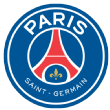

PSG vs. Marseille
March 17, 4 p.m. ET
Name of Rivalry: Le Classique
Year the rivalry began: 1987
Overall head-to-head record (wins-draws-losses): Played 95, PSG lead 41 wins, 22 draws, 32 losses
PSG's biggest villain: A few players have played for both clubs through the years, but Fabrice Fiorese, an average French striker, was never forgiven by the PSG ultras for switching camp and going from Paris to Marseille in summer 2004 after three seasons in the capital. When he came back to the Parc des Princes in the only season he stayed in Marseille, the Paris ultras made his life hell.
Marseille's biggest villain: Marseille fans absolutely hate Neymar. In his first visit last season, the Brazilian superstar was their target. They booed him, threw everything and anything at him when he took corners, and they almost celebrated his sending off like they had won the game.
Story that best explains the rivalry: On April 5, 2015, PSG are travelling to Marseille. The Parisians' supporters have not been allowed to travel to the Velodrome for security reasons, and yet, the PSG team bus was attacked by some Marseille ultras. A golf ball thrown by one of the attackers smashed one of the windows, almost hitting Zlatan Ibrahimovic inside the coach.
Why you should watch this edition: The antagonism and hatred between the two clubs and the two sets of fans is so big. It's as much a footballing rivalry as a social, economic and demographic one as well. It is the capital against the second-biggest city in the country. -- Julien Laurens


Vancouver vs. Seattle
March 30, 10 p.m. ET, ESPN+
Name of rivalry: The Cascadia Derby. This is actually a three-pronged rivalry involving teams in the Cascadia region, including the Portland Timbers, Seattle Sounders and Vancouver Whitecaps.
Year the rivalry began: Taking into account the old North American Soccer League, it began in 1974. It continued through a variety of leagues and began in MLS starting in 2011.
Overall head-to-head record (wins-draws-losses): Played 138, Seattle leads 66 wins, 50 draws, 22 losses
Vancouver's biggest villain: This is a tough one, as many of the Sounders antagonists have left (Ozzie Alonso) or retired (Brad Evans, Dempsey). The crown now probably rests with Nicolas Lodeiro, who has hit the Caps for four goals and five assists in eight league and playoff appearances.
Seattle's biggest villain: Kendall Waston probably ranked tops on this list given his battles with Clint Dempsey, but he's in Cincinnati now, so Fredy Montero gets the nod. He scored the first MLS goal in Sounders history back in 2009, and scored four goals in four games against Vancouver. But he crossed enemy lines in 2017 when he suited up for the Whitecaps while on loan from Chinese side Tianjin TEDA. He even scored a memorable double in a 2-1 win that season. After spending the 2018-19 campaign with Sporting CP, Montero has returned to Vancouver and will be aiming to torment his old team once again.
Story that best explains the rivalry: The third game of the 1980 NASL season saw the Whitecaps as defending NASL champions, but having lost their first two games of the campaign while Seattle had won their first two. Regulation finished 0-0, but in those days, ties were decided by a shootout. Willie Johnston fired home the game winner for the Whitecaps, and then proceeded to go over and moon the Seattle bench and their manager, Bruce Rioch. Turns out the two had a history dating back to their time with Scotland's national team when it is alleged that Rioch kept more than his share of Scotland's player bonuses from the 1978 World Cup. Johnston later admitted the "gesture" was for Rioch.
Why you should watch this edition: The Whitecaps/Sounders encounter oftentimes doesn't get the attention of the Timbers/Sounders set-to, but there is passion for sure. The Whitecaps are engaged in a bit of a rebuild under new manager Marc Dos Santos. The Sounders remain one of the favorites to finish atop the Western Conference thanks to Stefan Frei, Lodeiro and Raul Ruidiaz, but the return from injury of Jordan Morris will be another reason to watch. -- Jeff Carlisle
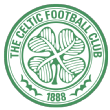
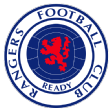
Celtic vs. Rangers
March 31, 7 a.m. ET
Name of rivalry: The Old Firm
Year the rivalry began: 1888
Overall head-to-head record (wins-draws-losses): Played 415, Rangers lead 160 wins, 99 draws, 156 losses
Celtic's biggest villain: Mo Johnston reneged on a deal to re-sign for Celtic in 1989, instead signing for Rangers, becoming the first high-profile Roman Catholic to play for the staunchly Protestant club.
Rangers' biggest villain: As a player and as a manager, Neil Lennon is a Celtic name that always antagonises Rangers supporters.
Story that best explains the rivalry: A rivalry rooted in Glasgow's religious divide that goes far beyond what happens on the pitch.
Why you should watch this edition: This could be Rangers' last chance this season to halt Celtic's march to an eighth successive title. -- Mark Ogden
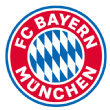

Bayern Munich vs. Borussia Dortmund
April 6, 12:30 p.m. ET
Name of Rivalry: Der Klassiker, or "The German Clasico"
Year the rivalry began: 1995 (approximately)
Overall head-to-head record (wins-draws-losses): Played 120, Bayern lead 57 wins, 31 draws, 32 losses
Bayern's biggest villain: Andreas Moller. Nobody could rile Bavarians quite like the cultured and fleet-footed midfielder, who further upset Bayern supports by lifting the European Cup in their own backyard (Munich's Olympic stadium) with Dortmund in 1997.
Dortmund's biggest villain: Manuel Neuer. The Bayern keeper is two villains in one. As a former Schalke ultra, he commands a lot of animosity already. Playing for Bayern doesn't help things.
Story that best explains the rivalry: Things got so heated in the late 1990s following Dortmund's ascent as serious challengers to Bayern's hegemony that keeper Oliver Kahn nearly bit BVB striker Heiko Herrlich's ear off during a game.
Why you should watch this edition: This next edition is likely to decide the Bundesliga title. Dortmund's 3-2 win in the autumn was a stunning thriller of top quality that heralded manager Lucien Favre's arrival as serious contenders. Bayern have since made up a lot of ground, but if Dortmund can escape the Allianz Arena unscathed, the first league title since 2012 could well be theirs. -- Raphael Honigstein


Fenerbahce vs. Galatasaray
April 14, Time TBD
Name of rivalry: The Intercontinental Derby
Year the rivalry began: 1909
Overall head-to-head record (wins-draws-losses): Played 388, Fenerbahce leads 146 wins, 119 draws, 123 losses
Fenerbahce's biggest villain: Former Liverpool manager Graeme Souness caused uproar when after his Galatasaray side secured a Turkish Cup final win against their rivals on enemy turf in 1996, he planted their flag in the middle of the pitch.
Galatasaray's biggest villain: Kemal Ataturk is hardly regarded as a villain nationally given that he is known as the "father of modern Turkey," but it rankles for Galatasaray supporters that one of their country's most influential historical figures is widely accepted to have been a Fener fan.
Story that best explains the rivalry: The teams' most recent meeting in November showed just how much this derby -- often considered the world's most febrile -- means. Fener came back from two goals down to draw 2-2 but that was an afterthought when a 30-man brawl, which involved players and staff and resulted in three red cards and five suspensions, broke out at the end.
Why you should watch this edition: What happened in November will surely still bubble below the surface, but there is more reason to be intrigued. These two are used to fighting for top honours but, implausibly, this time it's a clash of relegation battlers and title hopefuls. Galatasaray need to rein in leaders Istanbul Basaksehir while Fenerbahce, at severe risk of an ignominious drop to the second tier, hope the likes of Victor Moses and Andre Ayew can turn their fortunes around. -- Nick Ames
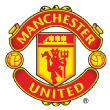
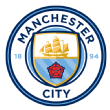
Man United vs. Man City
April 24, 3 p.m. ET
Name of rivalry: The Manchester Derby
Year the rivalry began: 1891
Overall head-to-head record (wins-draws-losses): Played 177, Man United 73 wins, 52 draws, 52 losses
Man United's biggest villain: Carlos Tevez left United to sign for City in 2009 and became the poster boy of the Sky Blues' rise to success, scoring key goals and engaging in verbal battles with his former United teammates.
Man City's biggest villain: Man City fans spent 25 years enduring United's dominance and that was driven by Sir Alex Ferguson, a man who claimed, wrongly, that City would not become top dogs "in my lifetime."
Story that best explains the rivalry: When United lost 5-1 against City in 1989, Ferguson later revealed that he went home and 'pulled the bedsheets over my head' for the rest of the weekend due to the pain of defeat.
Why you should watch this edition: United fans hate Liverpool more than City, so if losing to City means denying Liverpool the Premier League title, Reds could become Blues for one night only. -- Mark Ogden

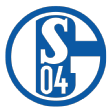
Borussia Dortmund vs. Schalke 04
April 27, Time TBD
Name of Rivalry: The Revierderby, or Ruhr Derby
Year the rivalry began: 1956 (approximately)
Overall head-to-head record (wins-draws-losses): Played 153 competitive games, Schalke lead 59 wins, 42 draws, 52 losses
Dortmund's biggest villain: Andreas Moller. The 1990 World Cup winner moved from Dortmund to Schalke in 2000 and scored against his former club in the derby as well. No defector was as loathed.
Schalke's biggest villain: Kevin Grosskreutz. In the Jurgen Klopp years, the versatile midfielder routinely provoked Schalke fans. "If I had a kid that would support Schalke, I'd send it away," he declared, among other pleasantries.
Story that best explains the rivalry: There are so many. How about the Dortmund-supporting construction worker who raised a BVB flag on the Veltins-Arena in 2010, S04's Jens Lehmann becoming the first goalkeeper to score from open play in Bundesliga history to secure a 2-2 draw, or Friedel Rausch (Schalke) getting bitten in the lower back by a police dog following a pitch invasion by Dortmund fans in 1969?
Why you should watch this edition: If it's anything like that last derby played at Signal Iduna Park, you'd be a fool not to tune in. Dortmund were 4-0 up at half-time against Domenico Tedesco's Royal Blues, but the visitors hit back four times, including an equaliser in deep injury time, to achieve a minor miracle. The Derby of the Century, the local media called it. -- Raphael Honigstein
